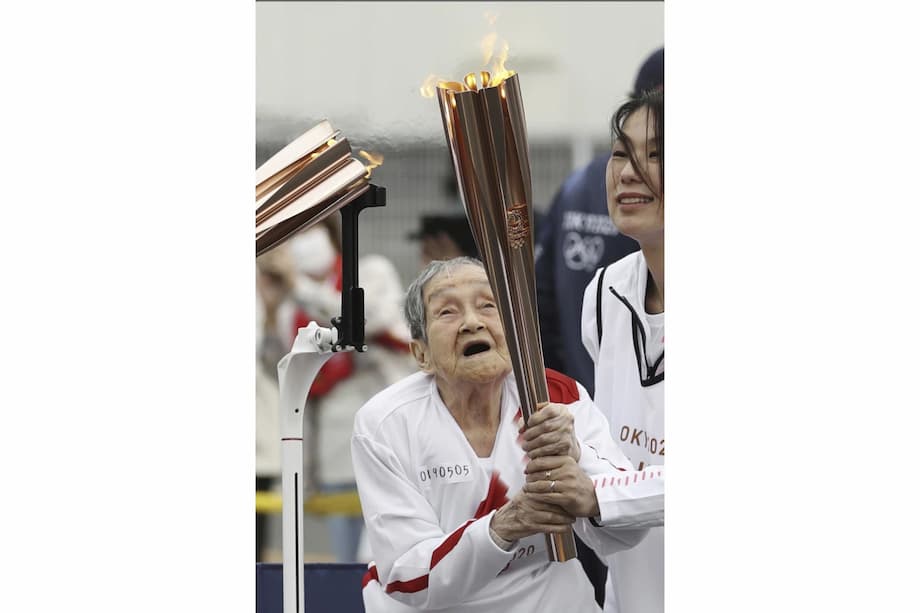Japan’s Oldest Living Person: Shigeko Kagawa’s Remarkable Journey
In a nation renowned for its extraordinary longevity, Shigeko Kagawa has become a new symbol of resilience and vitality. At 114 years old, the retired physician from Nara Prefecture is now officially recognized as Japan’s oldest living person, following the recent passing of Miyoko Hiroyasu, who was also 114. Kagawa’s life story is not only a testament to individual endurance but also a reflection of Japan’s demographic transformation and the secrets behind its world-leading population of centenarians.
- Japan’s Oldest Living Person: Shigeko Kagawa’s Remarkable Journey
- Who Is Shigeko Kagawa?
- Secrets to Longevity: What Does Shigeko Kagawa Say?
- Japan’s Supercentenarians: A Global Phenomenon
- The Legacy of Miyoko Hiroyasu and Other Supercentenarians
- Japan’s Aging Society: Challenges and Opportunities
- Shigeko Kagawa’s Enduring Inspiration
- In Summary
Who Is Shigeko Kagawa?
Born on May 28, 1911, in Nara Prefecture, Shigeko Kagawa’s life spans more than a century of dramatic change in Japan. She graduated from Osaka Women’s Medical College (now Kansai Medical University) before World War II, a rare achievement for women at the time. Her early career saw her serving at a hospital in Osaka during the Pacific War, where she witnessed the devastation of air raids and the resilience of her community. After the war, Kagawa took over her family’s clinic, dedicating herself to local healthcare as an obstetrician and gynecologist. She was known for her commitment, often keeping a telephone by her bedside to respond to patients’ calls at any hour. Kagawa retired at the age of 86, capping off a career that spanned more than six decades.
Even in retirement, Kagawa remained active and engaged. At 109, she made headlines as one of the oldest Olympic torchbearers in history, participating in the Tokyo 2021 torch relay—a moment that captured the imagination of the nation and the world. Today, she lives at home with her family in Yamatokoriyama, Nara Prefecture, maintaining a regular routine and enjoying simple pleasures like reading newspapers, watching television, and practicing calligraphy.
Secrets to Longevity: What Does Shigeko Kagawa Say?
Japan’s supercentenarians are often asked about the secrets to their long lives, and Kagawa is no exception. Yet her answers are refreshingly down-to-earth. When asked by TOS News in 2023 about her secret, Kagawa replied:
“I don’t have any. I just play every day. My energy is my greatest asset. I go where I want, eat what I want and do what I want. I’m free and independent.”
Her family echoes this sentiment, noting that she does not follow any extraordinary health regimen. Instead, she keeps a regular routine—going to bed and waking up at set times, eating three proper meals a day in small portions, and staying mentally and physically active. On her 113th birthday, Kagawa expressed her gratitude simply:
“I am grateful to be healthy.”
Upon becoming Japan’s oldest person, she told city officials that helping others during difficult times in her medical career contributed to her longevity—a reflection of her lifelong dedication to service.
Japan’s Supercentenarians: A Global Phenomenon
Kagawa’s story is remarkable, but she is far from alone. Japan is home to more than 95,000 centenarians (people aged 100 or older), the highest number per capita in the world. As of September 1, 2024, a record 36 million people—29% of the population—were aged 65 or older, and those aged 80 and above now make up 10% of the population. This demographic shift is both a source of national pride and a significant social challenge.
The Gerontology Research Group, a leading authority on supercentenarians, has validated the longevity claims of hundreds of Japanese citizens, most of whom are women. The oldest verified Japanese person ever was Kane Tanaka, who lived to 119 years and 107 days, making her the second-oldest validated person in history. Japan was also home to the world’s oldest man, Jiroemon Kimura, who lived to 116 years and 54 days.
Why Do So Many Japanese Live So Long?
Researchers point to a combination of factors behind Japan’s longevity:
- Diet: Traditional Japanese cuisine is rich in vegetables, fish, rice, and fermented foods, and low in processed sugars and red meat.
- Healthcare: Universal healthcare and a strong emphasis on preventive medicine help catch and treat illnesses early.
- Social Cohesion: Strong family and community ties provide emotional support and a sense of purpose.
- Active Lifestyles: Many elderly Japanese remain physically and mentally active well into their later years.
- Attitude: A positive outlook and adaptability, as seen in Kagawa’s approach to life, are common among the nation’s oldest citizens.
While genetics play a role, lifestyle and social factors are widely considered to be the main contributors to Japan’s remarkable longevity.
The Legacy of Miyoko Hiroyasu and Other Supercentenarians
Before Kagawa, the title of Japan’s oldest living person belonged to Miyoko Hiroyasu, who was also born in 1911. Hiroyasu studied art in Tokyo, taught in Hiroshima Prefecture, and raised three children. She spent her final years in a nursing home in Oita Prefecture, where she enjoyed reading newspapers, sketching, and playing card games. Like Kagawa, Hiroyasu led an active and engaged life well into her later years.
Japan’s supercentenarians often share similar stories—lives marked by resilience, adaptability, and a deep sense of gratitude. The country’s oldest citizens have lived through wars, economic upheavals, and rapid technological change, yet they remain optimistic and engaged with the world around them.
Japan’s Aging Society: Challenges and Opportunities
Japan’s rapidly aging population presents both challenges and opportunities. The country’s overall population is declining, but the proportion of elderly citizens continues to rise. This demographic shift has significant implications for healthcare, social security, and the economy.
On the one hand, the growing number of seniors puts pressure on public resources and the workforce. On the other, Japan’s elderly are increasingly seen as a valuable resource—offering wisdom, experience, and inspiration to younger generations. Initiatives to promote active aging, intergenerational exchange, and lifelong learning are gaining momentum across the country.
How Is Japan Responding?
The Japanese government and local communities are implementing a range of policies to address the challenges of an aging society:
- Healthcare Innovation: Investment in medical technology, home care, and preventive health programs.
- Workforce Participation: Encouraging seniors to remain in the workforce longer and supporting flexible work arrangements.
- Community Engagement: Creating opportunities for seniors to participate in volunteer work, education, and cultural activities.
- Urban Planning: Designing age-friendly cities with accessible transportation, housing, and public spaces.
These efforts aim to ensure that Japan’s elderly can continue to lead fulfilling, independent lives while contributing to society.
Shigeko Kagawa’s Enduring Inspiration
Shigeko Kagawa’s life is a powerful reminder of the possibilities of healthy aging. Her story resonates not only in Japan but around the world, as societies everywhere grapple with the realities of longer life spans. Kagawa’s message is simple yet profound: embrace life, stay active, and cherish your independence. Her achievements—both as a pioneering physician and as a symbol of longevity—continue to inspire people of all ages.
As Mayor Kiyoshi Ueda of Yamatokoriyama expressed upon Kagawa’s recognition as Japan’s oldest person:
“We hope she will continue to inspire us with her smile.”
In a world that often focuses on the challenges of aging, Kagawa’s life offers a different perspective—one of possibility, resilience, and joy.
In Summary
- Shigeko Kagawa, aged 114, is now Japan’s oldest living person, recognized for her long career as a physician and her active lifestyle.
- Kagawa’s approach to longevity is simple: regular routines, staying active, and maintaining independence and a positive outlook.
- Japan leads the world in longevity, with over 95,000 centenarians and nearly 30% of its population aged 65 or older.
- The country faces both challenges and opportunities as its population ages, prompting innovation in healthcare, urban planning, and social policy.
- Kagawa’s story is a source of inspiration, highlighting the value of resilience, service, and embracing life at every age.












